Máncora Travel Guide: Where to Eat, Sleep, & Surf
Planning a trip to Máncora, Peru? Here’s your ultimate guide to surfing, beaches, food, hotels, and local tips for making the most of your stay.
This page may include affiliate links. This just means that I make a small commission at no additional cost to you if you make a purchase through any of my links.
Máncora is a surf town on the country’s northern coast—and one of my favorite places to unwind, explore, and connect with Peru’s slower, beachier side. Whether you're coming for the waves, the warm weather, or just to kick back with fresh ceviche and a sunset view, Máncora delivers an easygoing, bohemian vibe that’s hard to leave behind.
In this guide, I’ll walk you through everything you need to know to make the most of your trip. From the best things to do (with practical tips and ethical travel notes), to where to stay based on firsthand experience, to local restaurants worth your soles—you’ll find honest recommendations I either tried myself or heard great things about from locals and fellow travelers. I also break down how to get to Máncora, how to get around once you’re there, and some key tips to help your trip go smoothly.
Whether you're a surfer, sun-seeker, foodie, or just planning your first visit to northern Peru, this guide has everything you need to plan the perfect Máncora getaway.
Where to Stay in Máncora
Where I Stayed:
I started my two-week stay in Mancora at La Maison, a boutique eco-hotel in what I could call the best neighborhood in Mancora. It’s a 5-minute walk from the surf break, close to all the best restaurants, and yet tucked at the end of a leafy, tree-filled lane for a peaceful night’s rest. The property has only private rooms at various rates, a swimming pool, and breakfast included. There’s a yoga shala on-site where daily classes are held for 40 soles (~$10 USD). La Maison is truly an oasis in Mancora. You can read about my stay at La Maison in this blog post.
Check Availability - private rooms from $29 per night
Located just around the corner from La Maison, but offering dorms as well as private rooms, Eco Lodge is a nice budget-friendly place to stay in Mancora. You’ll have access to a refreshing swimming pool, free filtered water, and use of the kitchen for cold meal prep outside of breakfast hours. There are a few spots throughout the property where you can practice yoga or relax with friends. It’s a really relaxed vibe and an easy spot to connect with other guests. The dorms, where I stayed, have just three beds (each with a mosquito net), a bathroom inside the room, and a private balcony, meaning a semi-private space that feels more like a hotel room than a hostel dorm.
Check Availability - dorms from $20 per night (female-only dorms available), privates from $63 per night
I moved over to Kinti Guest House at the end of my stay in Mancora to get a feel for a new part of town. Kinti is located just two blocks from the more swim-friendly beachfront of Mancora, while still being just a 10-minute walk to the surf break too. It’s a really nice community-oriented spot to stay, with dorms and private rooms available at unbelievable rates and an exceptional homemade breakfast each morning for an extra fee, if not included in your room rate. There are several communal spaces inside, a kitchen available for guest use, and great wifi connection. I met so many great travelers while staying here and it’s really close to the bus station if you’ll be heading out of town by bus.
Check Availability - dorms from $17 per night, privates from $37 per night
Other Great Máncora Hotels & Hostels:
Budget-Friendly Places to Stay in Máncora:
Wally’s House Mancora - Social and laid-back hostel with hammocks and a relaxed vibe. Dorms from $10, bungalows from $25.
Stone House Mancora - Cozy and artsy hostel with a peaceful atmosphere. Dorms from $10, private rooms from $27.
Hospedaje Ola Marina - Simple, family-run guesthouse with a great location. Private rooms from $25.
Mid-Range Hotels in Máncora:
Ombú Máncora - Stylish boutique stay with lush gardens. Rooms from $42.
Kimbas Bungalows Mancora - Rustic-chic bungalows with a tropical setting. Rooms from $50.
Puerto Bamboo - Modern eco-friendly hotel with spacious rooms. Rooms from $54.
Luxury Hotels in Máncora:
Arennas Mancora - High-end beachfront resort with a private pool and spa. Rooms from $220.
DCO Suites Lounge & Spa - Romantic, oceanfront boutique hotel, perfect for couples. Rooms from $195.
KiChic - Serene, adults-only boutique hotel blending luxury with nature. Rooms from $250.
Where to Eat & Drink in Máncora
Some of my personal favorite places to eat and drink in Máncora include:
This is the spot I ended up visiting frequently for its healthy menu, amazing coffee and chai, dessert shelf, and stable wifi connection. It gets really busy at the lunch hour, but outside of that, it’s one of the best places in town for digital nomads in need of a place to work from for a few hours.
For an affordable, brunch-style meal in an air-conditioned and mural-covered space, Blacksheep Cafe is the spot. Their espresso and coffee drinks are also especially noteworthy, as are their vegetarian options.
For smoothie bowls, sourdough toast, and vegan baked bites in a laid-back atmosphere, Palmeras is a great spot if you can snag a seat in the shade. If you’re looking for a stable wifi connection too, you’re better off at Blacksheep or La Biodega.
Máncora’s go-to spot for fresh sushi and Japanese-Peruvian fusion, featuring high-quality ingredients and beautifully plated cuisine. I recommend their vegan makis and poke bowls.
For gourmet small plates, craft cocktails, and some vegan options too, At(e)lier is the perfect spot. Its dim-lit dining room is atmospheric and the dishes are innovative, especially their banana gnocchi and carrot hummus.
For tasty wood-fired, thin-crust pizzas and access to ping pong and pool, Pizzalia is the place. It’s not always the fastest service, but the flavor’s worth whatever wait you may have.
Other Highly Recommended Restaurants in Máncora:
Detour Surf & Coffee: A laid-back café serving top-notch coffee, smoothie bowls, and hearty breakfasts, perfect for surfers and digital nomads alike.
ManQura Restobar: A highly-rated and higher-priced spot in Máncora, offering a variety of Peruvian and Latin American dishes, including fresh seafood options like ceviche.
La Sirena d’Juan: Looking a little out of place in Mancora, La Sirena d’Juan is fine dining in a dusty surf town. I never had a chance to try it, but it’s many people’s most memorable meal. Their fresh tuna steaks are legendary apparently.
Tao Mancora: For a Tokuyo alternative, Tao ranks highly for its Asian-Peruvian fusion cuisine. It’s a bit on the pricier side, but it’s a nice change of pace from other spots in town, especially if you’re craving seafood and pan-Asian cuisine.
Pizzeria Trattoria El Italiano: This is one of Mancora’s most popular pizzerias, and most authentic too. It’s run by an Italian family, so you’re guaranteed to dig into true-to-taste Italian-style pizzas and pasta.
What to See & Do in Máncora
Learn to Surf in Máncora
Máncora is one of Peru’s top surf towns, making it the ideal place to learn how to surf. With warm waters year-round, consistent waves, and a laid-back beach vibe, it’s perfect for beginners and intermediate riders alike. The main beach, Playa Máncora, offers gentle, rolling waves that are great for first-timers, while more advanced surfers can head to nearby spots like Punta Ballenas or just wait for a big swell at Playa Máncora (which isn’t unheard of).
Surf lessons are easy to arrange and typically include a soft-top board, rash guard, and about 1.5 to 2 hours of instruction from a certified surf coach (I loved taking lessons with Gianmarco Chapi, a local pro). You’ll find surf schools, like my top pick Pilar’s Surf School, right on the beach or just off the main street, and many allow walk-up bookings—but reserving in advance during high season (June–August and December–February) is recommended.
If you’re planning a longer stay, surf camps are available that include accommodation, multiple lessons, and optional yoga or group excursions. One of the best places to browse and compare surf camp options is BookSurfCamps.com, a trusted platform that curates top-rated surf experiences around the world — including several in Máncora and nearby towns. You can filter by skill level, travel dates, and what's included, making it easy to find the perfect fit.
Pro Tip: Most lessons take place in the early morning or late afternoon when waves are gentler and crowds are thinner.
Try Kite Surfing in Máncora
Photo Courtesy of Wild Kite Peru
Máncora isn’t just a surf town—it’s also a kite surfing paradise, especially between May and November, when strong and steady cross-shore winds blow in almost daily. With warm water, open space, and reliable wind conditions, Máncora is considered one of the best places in South America to learn kite surfing or sharpen your skills.
Whether you're a total beginner or looking to level up, you'll find plenty of schools offering IKO-certified kite surfing lessons, gear rentals, and multi-day progression packages. One of the most reputable spots is Wild Kite Peru, located just north of town with direct beach access, experienced instructors, and a relaxed, social vibe. They offer everything from intro classes to advanced coaching, plus accommodation options if you want to stay right by the action.
Lessons typically last 2–3 hours and include all the necessary equipment—kite, board, harness, helmet, and safety gear. If you're already confident on the water, you can rent gear and ride independently or book a quick refresher session.
Pro Tip: Plan your kite trip between July and September for the most consistent wind days.
Catch Sunset at the Máncora Lighthouse (Faro de Máncora)
For one of the most breathtaking views in Máncora, head up to the Faro de Máncora, the town’s picturesque lighthouse perched on a hill above the coast. It’s a bit of a hidden gem and offers a panoramic view of the Pacific Ocean, the desert landscape, and the curving coastline—especially stunning at golden hour.
It’s about a 20–30 minute uphill walk from town. The trail is unpaved and a bit steep in parts, so wear proper shoes and bring water. Once you reach the top, you’ll find not just the lighthouse and its viewpoint, but also a small café-restaurant nearby, where you can relax with a drink or snack while soaking in the view. It’s a great place to rest after the climb and watch the sun dip below the horizon.
The lighthouse itself is not open for tours, but the viewpoint next to it is open to the public and free to visit. It’s popular with photographers, couples, and anyone looking to escape the bustle of the beach for a more tranquil experience.
Pro Tip: Bring a blanket or sarong to sit on, and don’t forget your camera—this is one of the most picturesque spots in Máncora
Spend a Day at Las Pocitas Beach
Los Corales Hotel in Las Pocitas offers day access to their beachfront loungers and pool for 70 soles
If you’re looking to escape the crowds and soak up a more tranquil side of Máncora, Las Pocitas Beach is a must-visit. Located just 10 minutes south of the town center, this stretch of coastline offers a quieter, more upscale beach experience with soft golden sand, clear tide pools, and boutique beachfront accommodations.
Las Pocitas—named for the little “pocitas” or tide pools that form between the rocks at low tide—is perfect for swimming, sunbathing, or just enjoying a peaceful walk. The beach is clean and less commercial, with fewer beach vendors and a more relaxed vibe. It’s also a favorite among couples and families looking for a calm, scenic day by the water.
To get there, you can take a short tuk-tuk ride from downtown Máncora (around 5–10 soles), rent a bike, or even walk if you're staying nearby. There are no big crowds, and many of the beachfront boutique hotels and eco-resorts here offer day access, beachside dining, or spa services, even if you're not staying overnight. I had a lovely day at Los Corales for 70 soles.
Practice Yoga in Máncora’s Beachside Studios
Photo Courtesy Algae Surf Camp
Whether you’re a seasoned yogi or just looking to stretch out after a surf session, yoga in Máncora is the perfect way to reconnect and recharge. With ocean breezes, open-air shalas, and a wellness-focused atmosphere, the town offers a variety of drop-in classes, private sessions, and yoga retreats right by the sea.
Many yoga studios are located inside eco-lodges or boutique hotels in both central Máncora and the quieter Las Pocitas area. Classes often take place on shaded wooden decks with views of the ocean, and some include breathwork, meditation, or sunset sessions. Vinyasa and Hatha are the most common styles offered, but you’ll also find Yin, restorative, and even surf & yoga combo classes throughout the week.
Drop-in classes typically range from 30 to 50 soles, and mats are usually provided. For a deeper experience, consider booking a multi-day yoga retreat, which often includes meals, accommodation, wellness workshops, and excursions.multi-day yoga retreat.
Do Not Swim with Sea Turtles — Here's Why
Photo courtesy of Laszlo Ilyes
You may see tours around Máncora advertising the chance to “swim with sea turtles” in nearby El Ñuro or Organos — but responsible travelers should skip this activity. While it may sound like a dream experience, these tours often involve feeding, chasing, or crowding the turtles, which disrupts their natural behavior and can cause long-term harm to the species and their habitat.
The sea turtles near Máncora are wild and protected. Unfortunately, many of the so-called “eco tours” use unethical practices to guarantee sightings and close interactions, turning wildlife into a tourist attraction rather than a conservation priority.
Did you know? Touching, feeding, or swimming too close to sea turtles can cause stress, increase the risk of disease, and interfere with their migration and feeding patterns.
Instead of swimming with them, consider more ethical ways to experience Máncora’s marine life:
Responsible wildlife watching: Book a boat tour with operators that follow distance and non-interference guidelines.
Snorkel independently in turtle-friendly areas without baiting or approaching wildlife.
Support local conservation efforts by donating or volunteering with vetted marine NGOs, like ORCA Peru and Pro Delphinus.
Go Whale Watching in Los Órganos (July to October)
Photo courtesy of Pacifico Adventures
Just 15 minutes south of Máncora, the small coastal town of Los Órganos transforms into one of the best spots in South America for humpback whale watching from July to October. During this season, thousands of humpbacks migrate from Antarctica to the warm waters of northern Peru to mate, give birth, and nurse their calves — offering visitors an unforgettable chance to witness these majestic creatures up close.
Whale watching tours typically last 1.5 to 2.5 hours and depart in the early morning when the seas are calmest. Tours are led by licensed marine guides, and most boats are small enough to ensure a personal, immersive experience while still maintaining a respectful distance from the whales. Expect to see breaches, tail slaps, and sometimes even mothers swimming alongside their calves.
It’s recommended to book in advance during peak season, especially on weekends or holidays. Many tour operators include round-trip transport from Máncora, or you can take a quick tuk-tuk, bus, or taxi to the Los Órganos pier.
Pro Tip: Choose tour companies that follow official marine wildlife guidelines, like Pacifico Adventures, and avoid any that chase or crowd the whales.
How to Get To, From, & Around Máncora
Getting to Máncora
By Air
The three closest airports to Máncora are:
Talara Airport (TYL) – The nearest airport, about 1.5 hours away by car. Direct taxis cost around 150 soles (~$40 USD), or you can take a taxi to the Talara bus station and catch a cheaper bus to Máncora.
Tumbes Airport (TBP) – Located 2 hours away, Tumbes is another good option. Taxis cost around 250-350 soles (~$68-$95 USD), or you can take a taxi to the Tumbes bus terminal and hop on a budget-friendly bus.
Piura Airport (PIU) – The largest airport in the region, 3.5-4 hours away. This airport has the most flight options, including from Lima. Direct taxis cost 350-450 soles (~$95-$122 USD), or you can take a taxi to the bus terminal and get a cheaper ride to Máncora.
Pro Tip: If you're looking for convenience, arrange an airport transfer in advance through your hotel or a site like GetTransfer.com to ensure you’re traveling with a trusted driver.
By Bus
Taking the bus to Máncora is one of the most budget-friendly and convenient ways to arrive, with direct routes available from major cities like Lima, Piura, Tumbes, and Talara. Several reputable bus companies, including Cruz del Sur, Civa, Oltursa, and Eppo, operate comfortable long-distance buses with varying levels of service, from basic seats to full “cama” (bed) seats for overnight trips. The journey from Lima takes approximately 18-20 hours, while buses from Piura, Tumbes, or Talara take between 2 to 4 hours, depending on the departure city.
If arriving by air, you can take a taxi or mototaxi from the airport to the nearest bus terminal. From Piura and Tumbes, Civa and Eppo offer frequent departures, while from Talara, Eppo is the main provider. Tickets can often be purchased online in advance, and it’s recommended to book a higher-class seat for comfort. Some buses drop passengers at the Panamericana Norte Highway, requiring a short mototaxi ride into Máncora’s town center.
By Car
Driving to Máncora is a great way to explore Northern Peru at your own pace. Car rentals are available at Piura (PIU), Tumbes (TBP), and Talara (TYL) airports, with companies like Hertz, Europcar, Sixt, and Localiza offering options. While a 4x4 isn’t necessary, a vehicle with good clearance is recommended if you plan to venture beyond Máncora’s main roads. The drive follows the well-maintained Panamericana Norte Highway (Route 1N), taking about 1.5 hours from Talara, 2 hours from Tumbes, and 3.5 to 4 hours from Piura.
Gas stations are limited along the route, so it’s best to fill up in Talara, Tumbes, or Piura before heading north. Be prepared for occasional tolls, speed bumps, and slow-moving trucks, and avoid driving at night due to poor road lighting and frequent animal crossings. Police checkpoints are common, so carry your passport, driver’s license, and rental documents. If you’re renting a car, booking in advance is highly recommended—especially during peak travel seasons. I recommend using Discover Cars to compare prices from multiple rental companies and find the best deal. They offer flexible options and competitive rates in both Tumbes and Piura.
How to Get Around Máncora
Getting around Máncora is easy and inexpensive, as the town is small and most places are within walking distance. The main modes of transportation are mototaxis, which operate like tuk-tuks and are the fastest way to get around. A short ride within town typically costs 3 to 5 soles, while trips to nearby beaches or resorts may range from 5 to 15 soles, depending on the distance. Always confirm the fare before hopping in, as prices can fluctuate based on the time of day and demand.
For those wanting more flexibility, bicycle and motorbike rentals are available from various shops in town, offering a fun way to explore the coastline and nearby attractions. If you’re staying outside of the main area, some hotels and eco-lodges provide shuttle services or can arrange private transportation. While renting a car isn’t necessary within Máncora, it can be useful for visiting remote beaches like Las Pocitas and Punta Ballenas, where you’ll find quieter stretches of sand and tide pools, or exploring towns like Los Órganos, Vichayito, and Zorritos, which offer excellent surfing, snorkeling, and hot springs.
Found this helpful?
I spend a lot of time in coffee shops putting together content like this. If you’d like to support my work, consider buying me a coffee to show some love ❤️
What to Read Next
Support the Blog While You Travel
Travel and give back to the blog by booking things like your hotels, tours, and trip insurance through the links below. When you use these links, they send a bit back my way at no additional cost to you. Your support is much appreciated!
Accommodations: Booking.com for hotels, HostelWorld for hostels, and Vrbo for vacation rentals
Tours & Experiences: Viator, GetYourGuide, and TripAdvisor for tours and experiences or GuruWalk for free walking tours
Shuttles & Transfers: Bookaway or 12Go
Flights: WayAway for booking, Hopper for knowing when to book, and Going for flight deal alerts
SIM Cards & eSIMS: Airalo or Saily for eSIMS or Drimsim’s universal SIM card
Trip Insurance: Squaremouth for affordable single trip insurance and World Nomads for coverage that includes adventure sports and activities
Learn Spanish: Rosetta Stone, Babbel, and Pimsleur
Visit my Travel Resources page for even more ways to support the blog with your travel purchases.
Surfing Costa Rica: A First-Hand Guide to Learning to Surf in Costa Rica
At age 32, my surf journey began in Costa Rica. In this post, I share not only where I’ve surfed in Costa Rica, but how it went and what you need to know about surfing in the land of pura vida.
This entry may contain affiliate links. This means if you click a link in this post and make a purchase, I may earn a small commission at no additional cost to you. It’s through affiliate links that I’m able to keep this blog going, so thank you for your clicks and support!
Learning to surf has been a dream of mine ever since I was a little girl posing with hibiscus flowers and having Blue Crush-themed birthday parties. At age 32, my surf journey finally began in Costa Rica. In this post, I share not only where I’ve surfed, but how it went and what you need to know about surfing Costa Rica.
Costa Rica is where I finally embarked upon my surf dream in a more serious and determined way. While I’d previously had one-off surf lessons in spots like Puerto Escondido, Mexico and Ayampe, Ecuador, they hadn’t gotten me very far. The big waves of Puerto Escondido washed me ashore halfway through my lesson, while Ayampe left me with an over-extended knee when I made the noob mistake of stepping off my board in the shallows.
Beat up and slightly traumatized, I didn’t pick my surf aspirations back up for another few years. It wasn’t until a breezy November day in Nazaré, Portugal, while watching the big wave surfers tow in to monstrous waves, that every bone in my body was saying it’s time. Not then, of course, but soon. Seated on those windswept sands, and more than a little inspired, I made the firm commitment to myself to start next year with a surf camp. And that is exactly what I did.
This post is both a re-telling of my surf story, as it pertains to Costa Rica, and a practical guide to surfing Costa Rica as I’ve done it and as I’ll continue to. So, yes this is an ever-evolving page, updated in step with my surf journey. I hope you find it helpful as much as entertaining, and maybe even a little bit inspiring, too.
Table of Contents
In this guide: Jacó and Uvita (so far)
Jacó
Jacó’s Part in my Surf Story
Jacó Surf Specs
Surf Camps in Jacó
Surf Lessons and Board Rentals in Jacò
Surf-Friendly Lodging in Jacó
Uvita
Uvita’s Part in my Surf Story
Uvita Surf Specs
Surf Camps in Uvita
Surf Lessons and Board Rentals in Uvita
Surf-Friendly Lodging in Uvita
Other Beginner-Friendly Surf Spots in Costa Rica
Jacó, Costa Rica
Photo Credit: School of the World
Located on the Pacific coastline of Costa Rica, just an hour and a half from the capital San José, Jacó is a rough-and-tumble surf and party town with year-round waves and beginner-friendly breaks. While beauty, when not beachfront, is hard to come by in this buzzing town, it does have it all, from supermarkets to souvenir shops, local sodas, and nightlife. It’s not a sleepy spot by any means and the surf infrastructure is there, too, with more than a few surf camps, surf schools, surf shops, and surf-friendly lodging to support you in the waves of Jacó.
About Jacó as a Surf Spot
year-round, beginner-friendly surf spot and one of Costa Rica’s most consistent, but consistently average
cleanest waves come in during the summer months, Costa Rica’s wet season
exposed beach break with a sandy bottom, better at high tide
lefts and rights on offer and multiple peaks
beware of rips, undertow, stingrays, and the occasional crocodile
Surf Camps in Jacó
Photo Credit: School of the World
I kicked off 2023 in Costa Rica at a surf camp called School of the World. It was affordable at $500 for the week, located on a beginner-friendly beach, and complete with a pool, kitchen, and yoga studio on-site. The rooms, though shared, weren’t dorm-style. They were two-bed, meaning just one roommate (if that), en suite, air-conditioned, and each room had a small kitchen with a fridge, sink, and dishware. It felt like a steal.
Because I was on a budget and there for surf and surf only, I didn’t capitalize on their other offerings. School of the World does what’s called learning vacations, meaning they not only offer daily surf lessons (one or two sessions a day), but you can opt to add on yoga classes, Spanish lessons, and photo/video classes. It’s genius and I’ve yet to see the same concept repeated anywhere else.
As this was my first proper go at surfing, I spent my week in Jacó entirely in the whitewater, first finding my balance on the board and being pushed into waves, then experimenting with some turns. While the green waves behind me beckoned, I wanted to do this right and all in due time. Even then, I knew this was a journey that shouldn’t be rushed. And at first paddle, I could tell my mind was the first block to be busted. A trick my instructor offered up then that I still lean on now is to sing a song at the takeoff. My song? Don’t Stop Believing.
About School of the World
Combines the elements of a surf camp, language school, yoga retreat, photography program, and boutique hotel under one roof
Pricing starts at $500 for surf-only programming, includes daily 2-hour lessons, board, rash guard, transport to the beach, and a video review mid-week.
Amenities include private or shared accommodations, an outdoor swimming pool, access to the yoga studio and mats when classes aren’t in session, kitchen (efficiency kitchen in your room and proper kitchen in the main area), and wifi (though it’s not the strongest).
Book directly or, if you want to support the blog, book through this link.
Other Surf Camps in Jacó
Room2Board Hostel & Surf School offers 3-, 5-, and 7-day surf camp options that incorporate non-surf activities like sunset hikes, meditation, yoga, and breathwork.
Associated with Selina hostels, Tortuga Surf Camp offers 7-, 14, and 22-day surf camp packages that include roundtrip airport transfers, accommodations, professional video and photography review, a survival apnea workshop, unlimited board rentals during your stay, and a skateboarding workshop.
Run by former pro surfer Diego Naranjo, this surf camp has 7-day packages that include 7 surf lessons, your accommodations, a daily breakfast, a USB of your surf photos, a massage or crocodile tour, and one yoga lesson.
Offering 3-, 5-, and 7-day surf camp packages, this surf camp includes daily lessons, accommodations, one meal per day, a daily activity, and unlimited board rentals during camp.
Surf Lessons + Board Rentals in Jacó
In Jacó, surf lessons range from $50 to $80 for a 1.5 to 2-hour lesson and rentals range from $12 for 2 hours, $20 for the day, and $100 for the week.
I recommend Ride In Surf for lessons. The lead instructor Anthony also teaches at School of the World and is a local pro surfer who speaks fluent English. Two-hour lessons start at $60USD. Book here.
For more surf lesson options in Jacó, check Viator and TripAdvisor.
Surf-Friendly Lodging in Jacó
A coliving hostel with surf camp packages should you wish to book them, Jaco Inn offers a free daily breakfast, access to their coworking space, a kitchen and grilling area, wellness offerings, common areas, and pop-up activities. You’re also welcome to sign up for individual surf lessons or board rentals.
Check Availability: HostelWorld | Trivago
Partnered with Tortuga Surf Camp, this beachfront hostel has a swimming pool, beachfront bar and restaurant, coworking space, wellness area, movie room, and access to surf lessons, board rentals, and surf camp packages
Check Availability: Booking.com | HostelWorld
This boutique hostel doubles as a surf camp, but you can choose to stay and surf on your own too. You’ll have access to a shared kitchen, plenty of common areas to hang out, a swimming pool, board rentals and storage, surf lessons, daily yoga classes, and a coworking space.
Check Availability: Booking.com | HostelWorld | Agoda
Read my full Jacó guide for tips on things to do, where to eat and drink, and how to get to and from town by public transportation.
Uvita, Costa Rica
Photo Credit: Bodhi Surf + Yoga
After my surf camp in Jacó, I continued south down the Pacific coast of Costa Rica to reach Uvita. This splayed-out town is a gem that still clings to its authenticity, even as more and more surf camps and hotels crop up within its lush folds. The waves aren’t as consistent as on other coastlines, but they are consistently empty and against epic jungle-meets-sea backdrops. When you’re not surfing, there are waterfalls and hot springs to explore, howler monkeys and exotic birdlife to peer up at in the treetops, whales to watch, and a range of restaurants, craft beer bars, and cafes to frequent that paint the picture quite quickly that community comes first in Uvita. How refreshing.
I got in the water twice while in Uvita, finally giving the green waves a go with two different instructors - Adrian at Bodhi Surf + Yoga and Leandro at Uvita Surf + Tour. Let’s just say I got to finesse my turtle roll, face my fears in bigger waves, and reinforce some surf theory. Actually surf? Not so much. The green waves weren’t ready for me yet. They kept sending me into a nose-dive for some reason…
About Uvita as a Surf Spot
great for beginners and intermediates alike
year-round surf and little to no crowds
southern end, known as Playa Chaman, is the most consistent, while north end by the rivermouth sometimes produces a sand bar
sandy-bottomed beach break with a rivermouth, best at high to mid-tide
waves are cleanest between December and March and biggest between May and September
there’s a $6USD entry fee for tourists as the beach sits within the Marino Ballena National Park
beware of stingrays, jellyfish, and rip currents
Check out my Uvita travel guide for tips on things to do, places to eat and drink, and how to get to and from Uvita by public transportation.
Surf Camps in Uvita
Photo Credit: Bodhi Surf + Yoga
While I didn’t attend the surf camp here firsthand, I did take lessons with one of their ISA-certified instructors, which meant I got a peek behind the gates of their beautiful wood cabin-like base and the inside scoop on what it might be like as a surf camp attendee at a B Corp-certified surf camp. Their 7-day, semi-inclusive surf and yoga camp includes 5 surf lessons, 5 yoga classes, daily breakfast, 3 dinners, and your national park entrance fees at Marino Ballena National Park where your lessons take place. It also includes roundtrip transport to and from the airport in San Jose, plus one night’s lodging in San Jose on your way in. Accommodation is in luxurious bungalow-style rooms with porches, some of which also include kitchenettes. Other amenities include a swimming pool, common areas with day beds and hammocks, therapeutic mattresses, and healthy, locally sourced meals.
Bodhi Surf + Yoga’s Camps
Surf Lessons & Board Rentals in Uvita
In Uvita, surf lessons range from $60 to $90 for a 2- to 3-hour lesson and board rentals range from $15 for the day to $90 for five days.
For Board Rentals: I recommend Casa Tiburón Surf Rentals and Colo Tico Boards.
For Surf Lessons: I recommend Uvita Surf + Tour. Leandro leads classes that push you just enough outside your comfort zone to take you to the next level while still keeping you safe. Two-hour lessons start at $60USD. Book here.
For more surf lesson options in Uvita, check Viator and TripAdvisor.
Surf-Friendly Lodging in Uvita
Located steps from the sands of Marino Ballena National Park, this is as close as it gets to surf on your doorstep in Uvita. Each of Arboura Eco Cabins’ five A-frame cabins have air conditioning, a private bathroom, a private patio, and a well-equipped kitchen. There’s also a pool on the grounds and a common area with a ping pong table and chess set.
Check Availability: Booking.com | Agoda
Another cabin-style accommodation steps from Marino Ballena National Park is Bungalows Ballena. Slightly pricier than Arboura Eco Cabins, each 1- or 2-bedroom wood cabin bungalow comes with a terrace, private bathroom, air conditioning, wifi, and a fully-equipped kitchen. Their whale tail-shaped pool and kiddie pool are there for you between surfs and there’s a gas grill and mini fridge available in the common area for barbecuing outdoors.
Check Availability: Booking.com | Agoda
Located half a kilometer from the main surf point, Tropical Beach Hotel offers air-conditioned rooms with private balconies and access to a guest kitchen. There’s also a gorgeous outdoor swimming pool with a poolside bar and restaurant on-site.
Check Availability: Booking.com | Agoda
Additional Beginner-Friendly Surf Spots in Costa Rica
Based on my own surf experience in Costa Rica and the surf community connections I made along the way, I was commissioned to write a beginner-friendly surf guide to Costa Rica for a publication called Surfers. In it, you’ll spot Uvita and Jacó, but also a few other spots that haven’t yet made it into this first-hand guide. Check it out for more beginner-friendly surf inspiration for your next trip to Costa Rica.
Costa Rica’s protected bays, sandy bottom beaches, warm water waves, and year-round consistency make it one of the best places in the world to learn how to surf. Here’s where to go and when.
If you found this post helpful, one of the best ways to say thanks, besides funding my next caffeine fix, is by booking your hotels, transport, tours, and trip insurance through the links on my Travel Resources page or by clicking any of the trip-relevant links below. This sends a bit back my way at no additional cost to you and helps to keep this blog up and running. Thank you for your support!
Accommodations: Booking.com, HostelWorld, Trivago
Tours & Experiences: Viator, GetYourGuide, EatWith, TripAdvisor
Trains, Buses, & Transfers: Bookaway, 12Go, BusBud
Car Rentals: DiscoverCars.com
Trip Insurance: Squaremouth, WorldTrips
Learn Spanish: Rosetta Stone, Babbel, Pimsleur

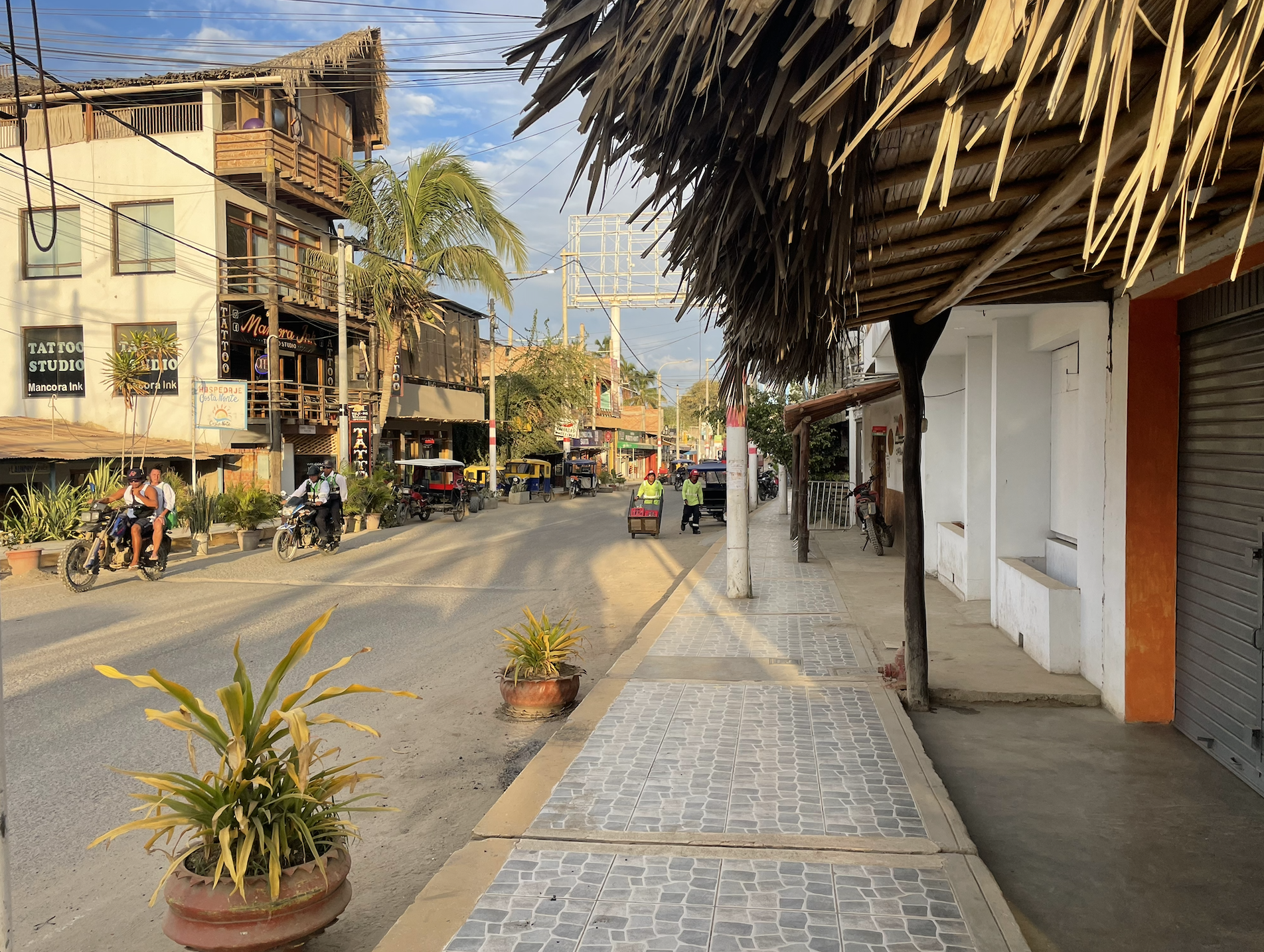

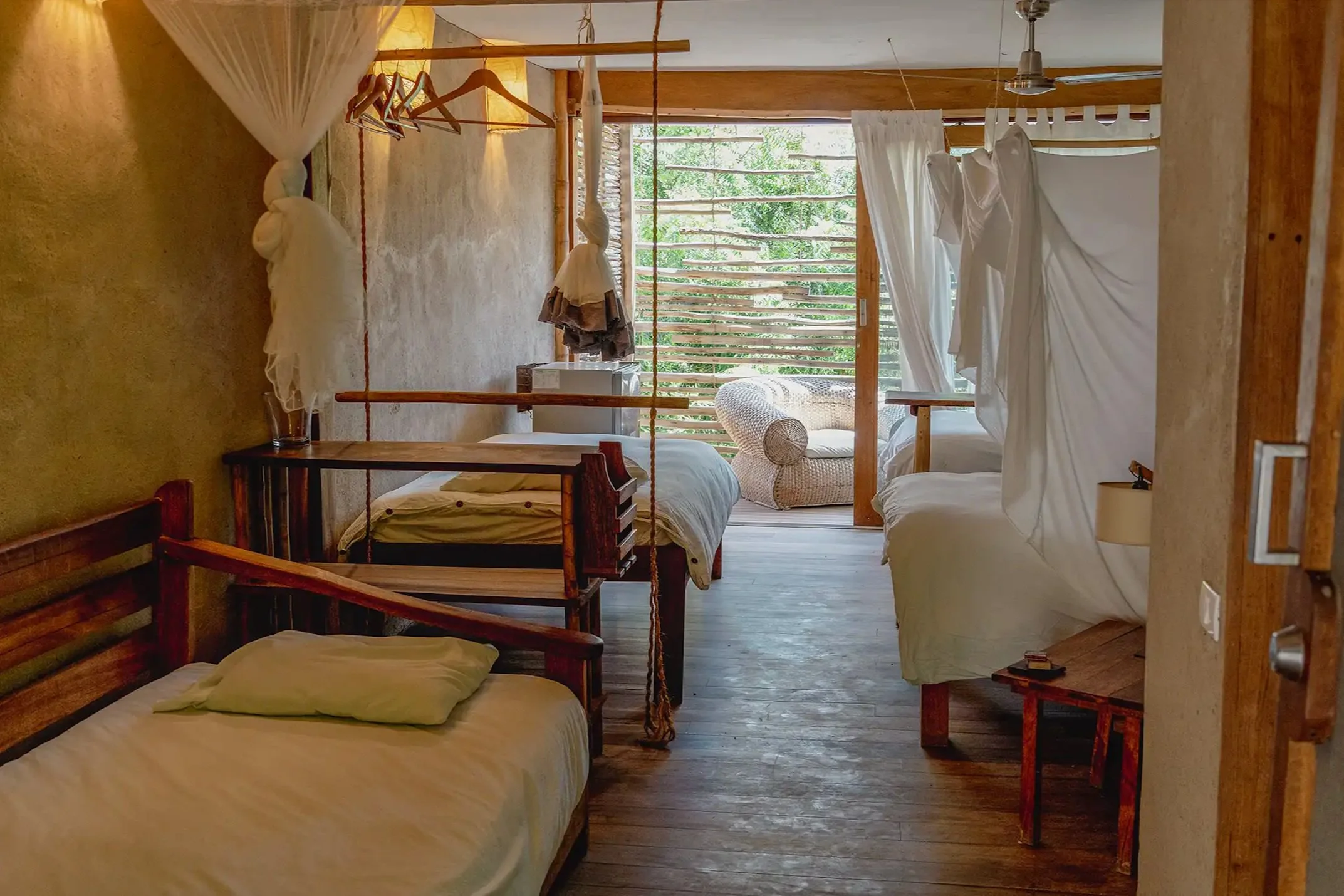


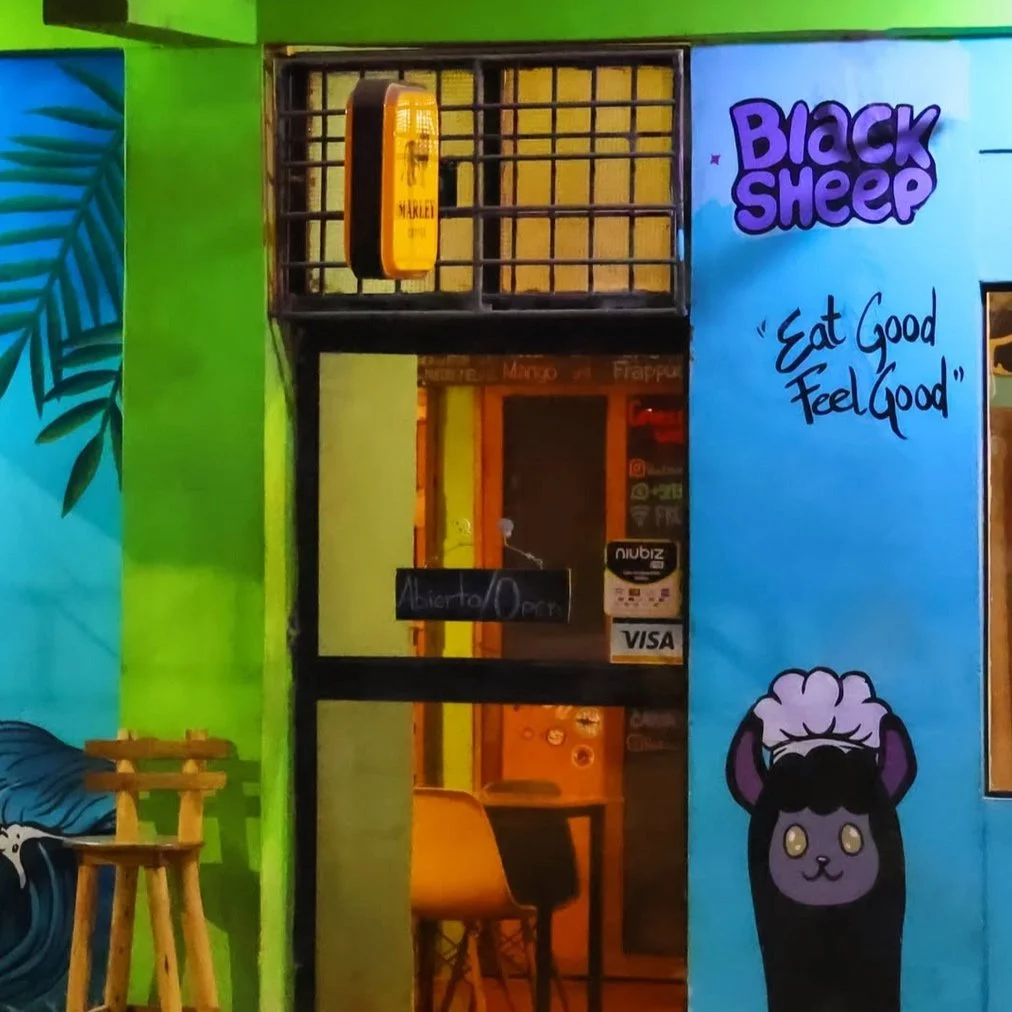

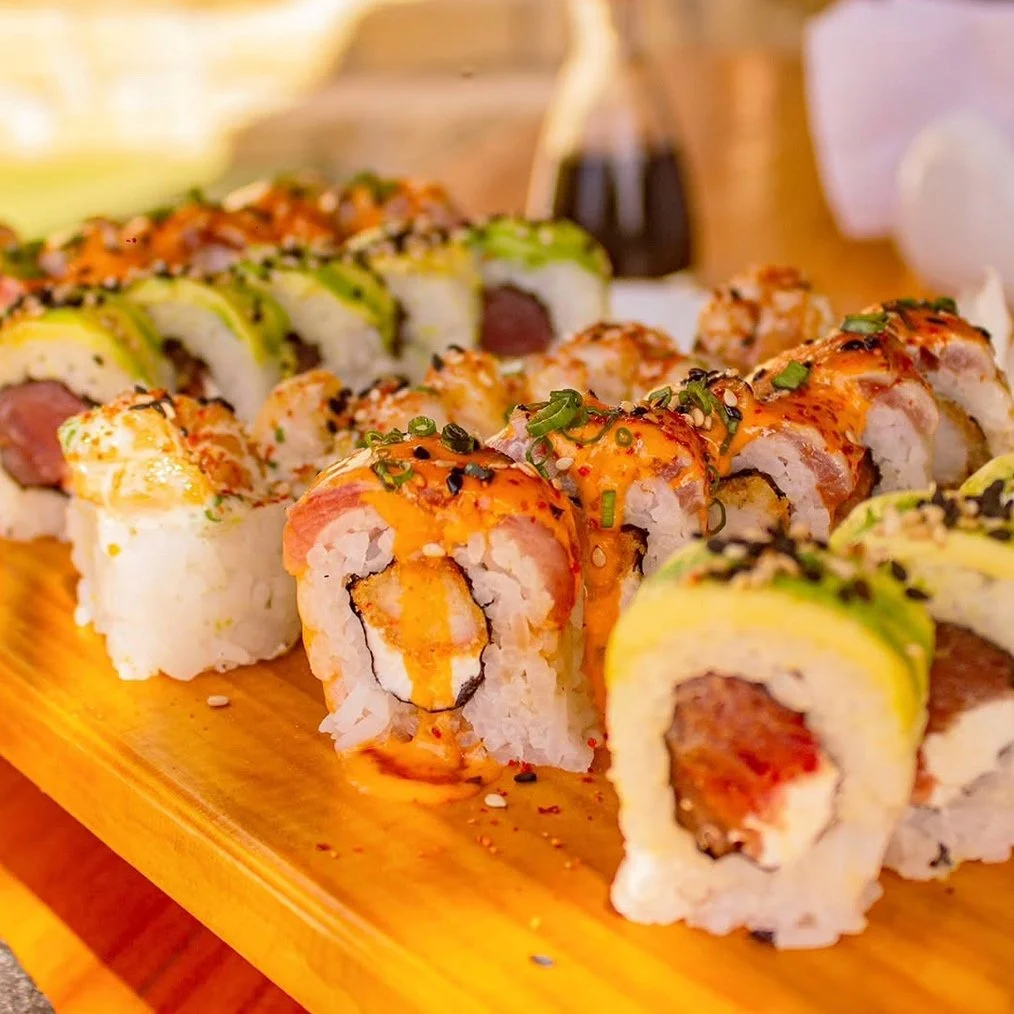








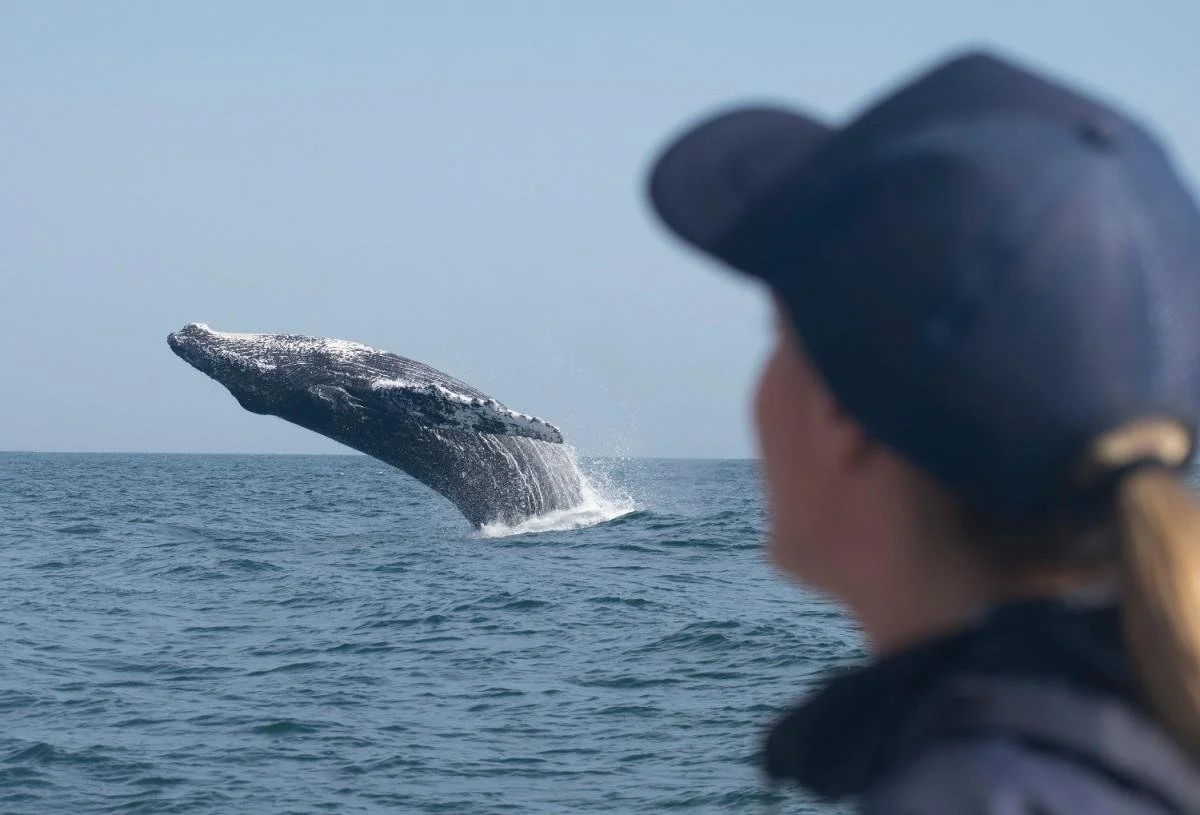






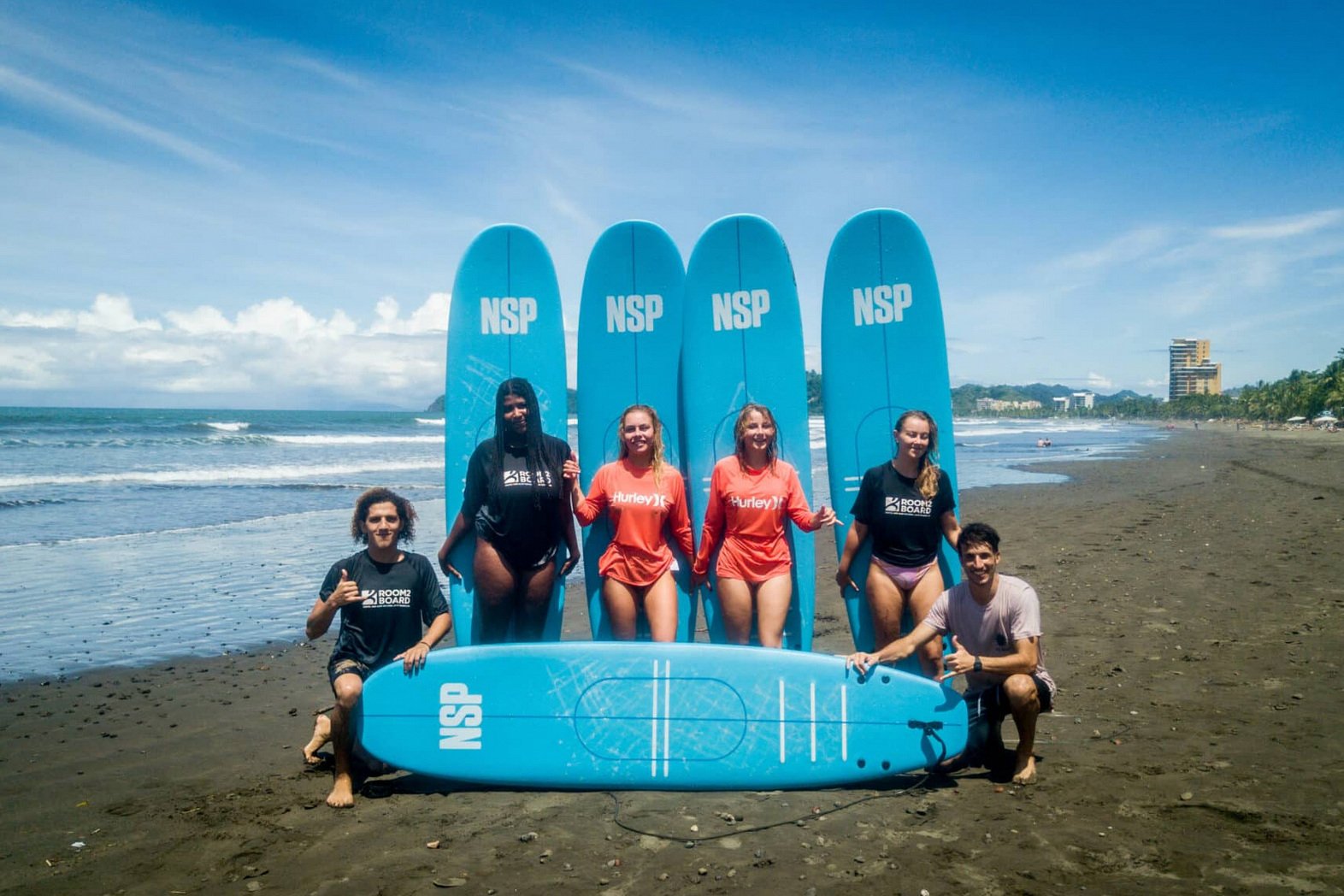





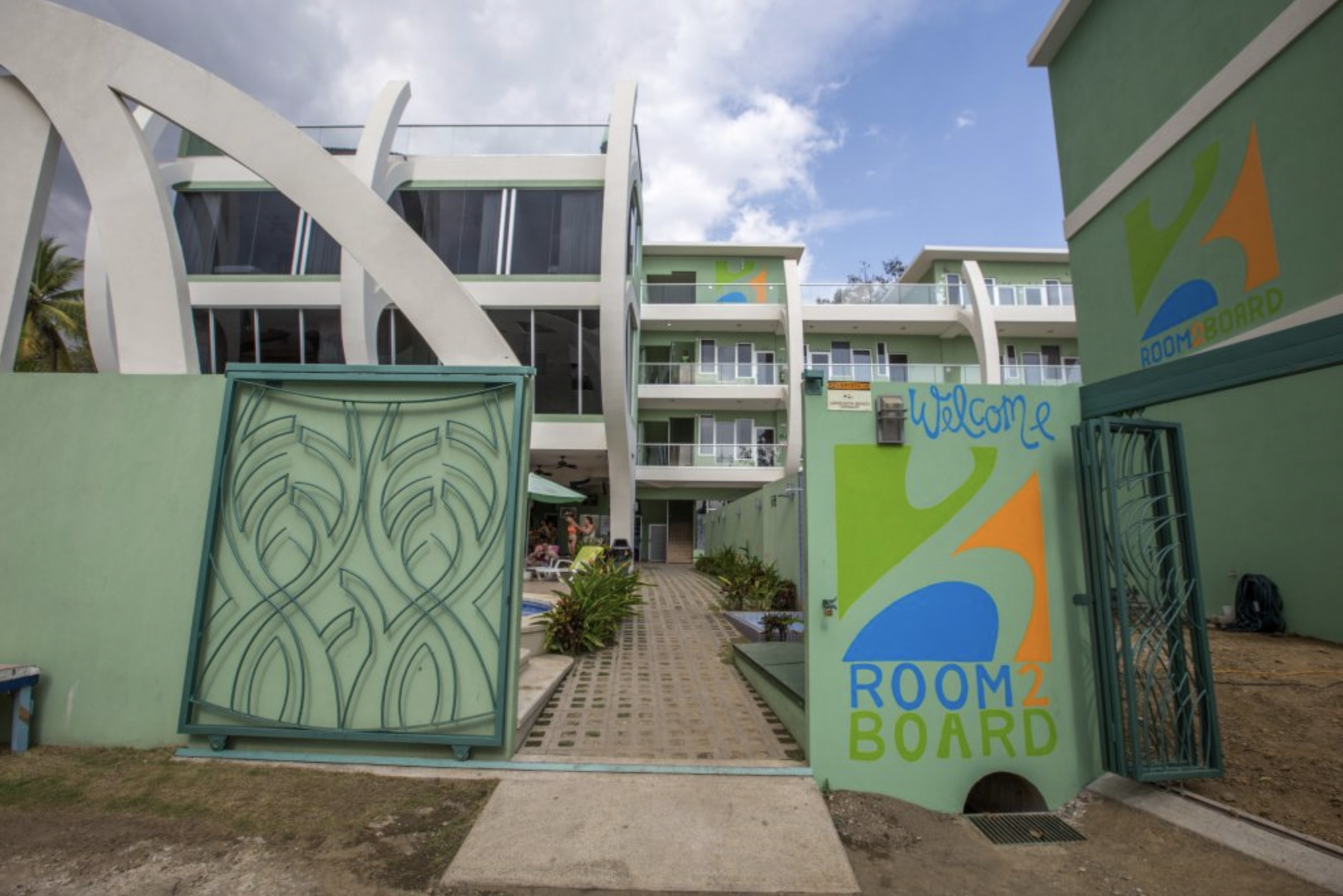









Máncora, Peru, is a surf town with perfect lefts, year-round waves, and an endless summer. Here’s what it’s like to stay and surf in Mancora at the eco-surf lodge La Maison.